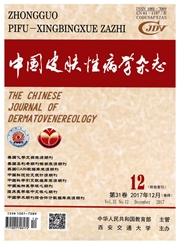

 中文摘要:
中文摘要:
Tat蛋白是HIV-1基因组编码的6个调控蛋白中一个重要的调控蛋白,在艾滋病相关卡波西肉瘤的发生发展中起一定作用。本文综述了细胞外HIV-1 Tat蛋白促血管生成作用的最新研究进展,包括Tal不同结构区域在促血管生成中所起的作用,以及与各种生长因子及化学因子之间的相互作用,阐述了Tat促内皮细胞及卡波西肉瘤细胞血管生成的主要机制,为临床开发拮抗Tat的促血管生成作用药物,抑制AIDS相关卡波西肉瘤的发生及发展提供理论依据。
 英文摘要:
英文摘要:
Objective The human immunodeficiency virus type 1 (HIV-1) Tat protein is a small cationic polypeptide that can be released from HIV-1 infected cells. Extracellular Tat elicits different biological responses in several types of target cells and acting as a key progression factor of AIDS-KS since it enhances all the biological steps of angiogenesis and KS progression. In the present paper,we review the various aspects that characterize the angiogenic effects of Tat. Tat interacts with at least three different types of receptors present on the surface of endothelial cells(EC) or KSC: binding integrin ot5131 and av133 with RGD region and providing adhesion signals the vascular cells required for growth and locomotion, phosphorylating VEGF receptor 2 which is the receptor that mediates most of VEGF-A's angiogenic effects and retrieving extracellularly bound bFGF into a soluble form which promotes EC or KSC growth by competing for heparin-binding sites of heparan sulfate proteoglycans (HSPG) or extracellular matrix (ECM). However,in order to exert its angiogenic effects,Tat requires the cooperation of inflammatory cytokines, including IL-1β, TNF-α, and IFN-γ,whose levels are increased in the blood and tissues of individuals at risk for AIDS-KS patients. The data described here suggest new intervention strategies for AIDS-KS based on the use of Tat competitors,combined with chemotherapoutics and anti- inflammatory drugs.
 同期刊论文项目
同期刊论文项目
 同项目期刊论文
同项目期刊论文
 期刊信息
期刊信息
